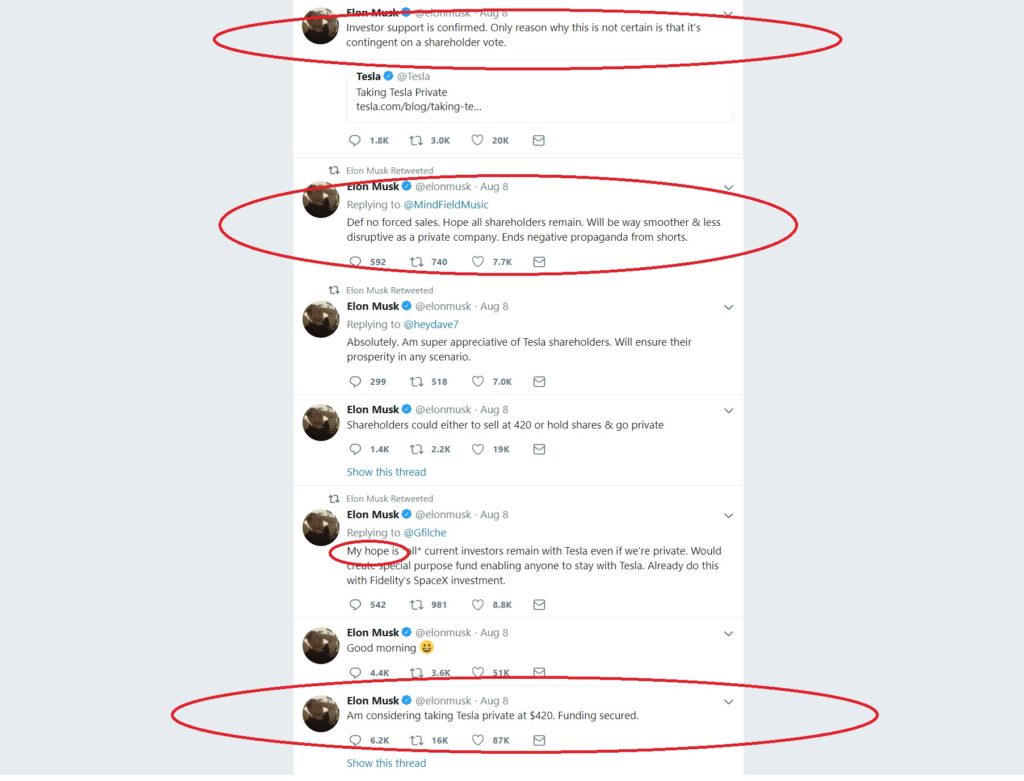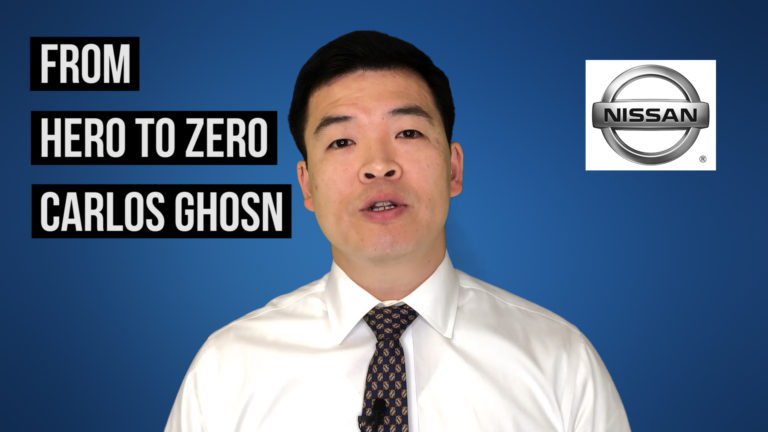Tesla Going Private: A Reckless Stunt or a Promising Opportunity?
Tesla Going Private
Business and financial news feeds have been going maniacal for the past couple of weeks over potentially the largest corporate buyout of all-time, yet a suspiciously secretive and dubious one; the Tesla buyout.
How it Started
On August the 7th, Tesla’s unreserved billionaire CEO Elon Musk announced through a Twitter thread that he was planning to take the automaker private. The price-per-share proposed by Musk was $420, a generous 20% premium over the $350 at which Tesla shares were being traded when tweeted the now infamous tweet: “Am considering taking Tesla private at $420. Funding secured.”

At the price proposed by Musk, taking into account his 20% stake at the company, he would need to secure an estimated $50 billion+ that would include $10 billion in debt outstanding. The only problem is, no one knew who would actually fund the deal. For all we know, Tesla is embroiled in financial difficulties, with a high cash burn rate, negative working capital and expesnive production blunders. Not exactly the type of situation that would facilitate such a move.
Over the subsequent days, it become apparent, that Musk either blatantly lied or never understood its meaning or the impact on share prices this short statement could make. Once the tweet was out, the Tesla’s share price sky rocketed by 11%, cheered by loyal Musk and Tesla followers. As he promised weeks prior – to stick it to the shorts – the day seemed finally to have come.
The SEC’s Suspicions
Unfortunately, for Musk and his followers, the The US Securities and Exchange Commission (SEC) had a different opinion about the whole incidents. The SEC was already looking into Tesla’s recently declared manufacturing and sales targets. Now the agency has more information to survey. According to the Wall Street Journal, the SEC contacted Musk on Wednesday (August the 8th) seeking more information with regard to his “funding secured” claim that he included in his Twitter announcement thread. This investigation was upgraded as Tesla was officially subpoened.
Although the initial survey was not based on any accusations directed at Musk, the SEC wants to know whether the announcement is to be taken at face value and considered a factual statement by the company’s CEO. Generally, the SEC does not prohibit companies from making their public announcements via social media as long as investors are given a heads-up and the information is accessible to everybody.
That is why, up until now, the inquiry into Musk’s tweetstorm is unlikely to lead up to an official investigation. The SEC was not the only party that had its question marks with regard to Musk’s announcement, though.
The Furious Shareholders and Short Sellers
Almost all of the institutional stakeholders were in a state of unease reading Musk’s tweetstorm. Retail investors, more than anybody else, were enraged by the announcement. Many worried they would get screwed over at $420 as they envision prices of $4,000 or more per share in the not so distant future. Short sellers were furious about as what they so thought of the blatant attempts to manipulate the stock price.
Questions were raised over the reasons behind Nasdaq letting Tesla shares trade for about 80 minutes following Musk’s announcement. Investors who had traded the stock within that interval were disadvantaged by the price swings that were caused. Further questions were prompted by the resumption of the trading of Tesla shares after an almost 90-minute halt. Normally, in a case like that, the exchange would halt all trading activity on that stock until some information is announced that provides some clarity.
With Nasdaq, in particular, companies are required to notify MarketWatch before any public announcements of the sort, which enables the exchange to coordinate the halting of trade with the company. No such coordination was reported from either side. This led investors and analysts to wonder whether Tesla’s move was in violation of the SEC’s regulations. Lawsuits were filed on that basis by several investors who bought or sold stocks in the company around the time of the announcement.
Musk’s Update and plenty of lawsuits
On Monday the 13th, Musk published a post on Tesla’s blog where he tried to address the market’s concerns by uncovering his “secured” source of funding. It turns out that the funding source that had Musk speaking with such assertiveness was the government-owned Saudi Public Investment Fund (SPIF), which earlier this year acquired a 5% stake in Tesla.
According to Musk, the buyout would amount to much less than the estimated $70 billion that people were talking about. Part of his plan is to have current stockholders roll their shares into the new private entity, and Musk himself would retain his 20% stake. The $420/share buyout would apply only to those shareholders who had no interest in staying. That would be the part where the SPIF’s money is needed.
However, the blog post conveyed a hint of hesitancy or doubt on Musk’s part as he went on to explain himself on having made such a rash announcement, something that is rarely exhibited by the notoriously-audacious Elon Musk. He was on the defensive with lawyers clearly looking over his shoulders. Other critics of Tesla and Musk have seen the statement in a similar light. For example, Vertical Group analyst Gordon Johnson found the post to project some doubtful second thoughts that Musk is having regarding the deal’s funding sources which turned out to not be as “secured” as Musk had earlier hoped and announced.
“He is specifically stating that funding is not secured, and I think that’s a big deal,” Johnson stated on Bloomberg Television.[2]
What gives such critiques some viability are the contradicting rumors around SPIF’s intent to actually increase its investments in Tesla. On the one hand, the Saudi government has among its topmost priorities the diversification of its revenue sources away from oil and more into the technological realms. According to Musk’s blog post, a meeting on July the 31st between him and representatives of the SPIF, including its Managing Director, gave him the impression that the Saudis were 100% on board if a private buyout was to take place.
On the other hand, there are sources from within the SPIF (PIF) and others that are close to the fund’s decision makers who told Reuters that the fund had no intention to get involved in a Tesla private deal. For one, the fund is invested with $45 billion in SoftBank Group’s Vision Fund, and would consult SoftBank before making such a move. On its part, SoftBank would not enter a deal with Tesla given its investments in GM Cruise, one of Tesla’s rivals.[3] Past negotiations failed in 2017 without any chance to rekindle interest.
Others like Gene Munster from Loup Ventures think that the post successfully outlined, loosely at least, the deal’s funding sources and the steps to be taken, and was also capable of addressing some of the crucial concerns that have been daunting the financial sector since Musk announced his intentions. On that basis, Munster thinks the post increased the likelihood that Tesla would indeed be taken private within the foreseeable future, perhaps within a year. “Our best guess is this will take 3-9 months,” Munster said.[4]
In any case, the damage was already done. At first, the stock surged up to almost $380 before falling 7% over the next two days and finally settling at $335 on Thursday. Hurting both common long-only investors who loaded up on Tesla after the announcements and short-seller of whome a few had to close their positions at a loss. The logical outcome was that class-action lawsuits have begun to trickle in. Ironically from short sellers as well as long-only investors.
Tesla Going Private – Really?
At the moment, it cannot be said with any degree of certainty whether Musk or his critics will be the last ones laughing. According to a blog post published by six of Tesla’s board members, the board is currently setting an action plan for the buyout. That is expected to require some special legal and financial arrangements given the size of the buyout.
What can be said is, that the mathematical probability of Musk pulling off such a complicated deal, without destroying his fan base and not overstretching Tesla’s already delicate finances is very small. Such a deal has never been done before, there are complicated regulatory hurdles to take (Cfius approval) and it is subject to sufficient finance. Even $25 billion Musk mentioned are not peanuts for a company that has been burning billions and that most likely will enter (like any capital intensive) into a more challenging period of the macroeconomic cycle very soon. In the end, the whole “Tesla Going Private” campaign could become just an nunnessary distraction.






